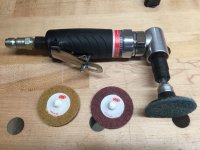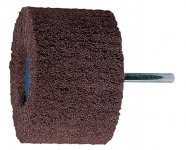Looking for something I can use on my RO90 for removing mill scale and light surface rust from mild steel, not planning to paint afterwards, just some spray lacquer.
Which grit should I be looking at buying? Anyone got any experience? I'm currently using an 80 or 120grit flap disc, so an industrial finish is acceptable.
Cheers.
Which grit should I be looking at buying? Anyone got any experience? I'm currently using an 80 or 120grit flap disc, so an industrial finish is acceptable.
Cheers.





